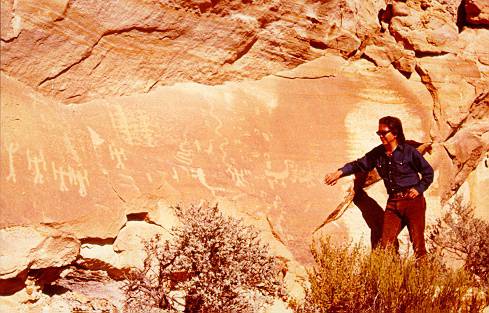
Artist Fritz Scholder on the Navajo Indian Irrigation Project

Fritz Scholder was born in Breckenridge, Minnesota in 1937. He studied at Sacramento City College, Sacramento State University, University of Arizona, University of Kansas, and Wisconsin State College. His first art training came from the Sioux painter Oscar Howe. He then studied under Wayne Thiebaud at Sacramento City College. In 1961, he participated in the Southwest Indian Art Project. Several years later, he began teaching at the Institute of American Indian Art in Santa Fe. He has taught and been a visiting artist at many institutions, and he has had numerous one-man and group shows.
Fritz Scholder is one of the best known Native American painters. Although he is only partly of Native American descent, his decision to portray the Native Americans as people rather than stereotypes cast him in a role of spokesperson. From his time studying under Wayne Thiebaud came his use of vigorous brushstrokes and bright, expressive colors, particularly a creamy yellow color. He was also influenced by the painting of Francis Bacon, with his raw and powerful style of expressionism. Scholder was also aware of the Pop artists, including Jim Dine and Andy Warhol. From these diverse influences, he created his own style, a mix of realism and abstraction, using elements of both Pop art and Abstract Expressionism. While often dealing with recognizable subject matter, Scholder flattens and compresses space and objects. He also employs bold colors in rhythmic patterns, distorting objects with expressionistic brushstrokes. In the 1980's, he moved towards fuller abstraction, creating abstractions of faceless figures.
The painting he did for the Bureau of Reclamation, Indian Ruin--Lake Powell has the bright colors, as well as the yellow. He uses the bright reds and browns as a flat pattern to differentiate the cliff from the rest of the ground. No doubt this coloring is also related to the strata in the cliff which was exposed when the face was cut away. The formal composition of the painting relies on the blue sky and water to bound the painting and pull the eye across. The eye is aided in this by the vertical striations which point from one area of blue to another.